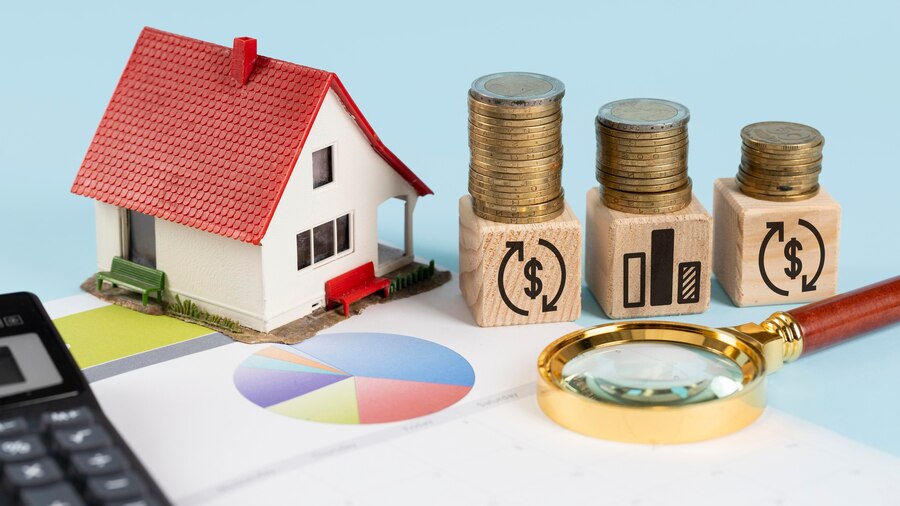Selecting the right property, whether for residential or business use, is a crucial step in any property investment journey. In 2024, more people are considering this investment to secure their future, hence Property Loan interest rates are their key consideration to acquire a property as per their financial situation. The understanding of the factors that impact these rates influence the interest rates can assist borrowers in making informed decisions and securing good terms for their Property Loans. This article explores the factors affecting Property Loan interest rates in 2024.
Economic Indicators
Economic indicators that influence the Property Loan interest rates include:
Inflation
Inflation plays a vital role in determining Property Loan interest rates. In times of inflation, banks may opt to raise interest rates to manage spending and control price hikes. Conversely, lower inflation typically leads to lower interest rates, making the borrowing process easy.
Gross Domestic Product (GDP)
The growth rate of a country’s GDP can influence interest rates. Robust economic growth often leads to higher interest rates due to increased demand for credit. Conversely, slow economic growth may lead to lowering of the interest rates to encourage borrowing and investment.
Employment Rates
Employment levels are another factor impacting interest rates. Higher employment figures generally translate to incomes and greater borrowing activity, prompting lenders to adjust interest rates accordingly. On the other hand, lower employment levels may limit borrowing capacity, resulting in lower interest rates.
Central Bank Policies
Central bank policies are a key determinant of interest rates, influencing borrowing costs across the economy through various tools and decisions, including:
Monetary Policy
Central banks wield influence over Property Loan interest rates through their monetary policy measures. By adjusting the interest rate central banks have the power to influence the lending rates set by all other banks. When the base rate is raised it usually leads to an increase in Property Loan rates whereas a reduction in the base rate can bring down borrowing costs.
Regulatory Adjustments
Changes in banking regulations can also impact interest rates. For example, stricter lending standards and higher capital requirements for banks may result in higher interest rates. On the other hand, deregulation or policies that aim to increase credit availability can lead to lower interest rates.
Market Forces
Market forces play a crucial role in determining interest rates, influenced by various supply and demand dynamics in the financial markets, including:
Supply and Demand
The fundamental economic principle of supply and demand plays a role in determining Property Loan interest rates. When there is demand for loans, credit interest rates tend to go up. Conversely, when there is an excess of credit, interest rates may decrease.
Competition Among Lenders
The level of competition among lenders also influences interest rates. In a highly competitive market lenders may offer lower interest rates for the borrowers. Conversely, in a less competitive market lenders may charge higher rates.
Borrower Profile
Borrower profiles significantly impact interest rates, as lenders assess various aspects of an applicant’s financial situation, such as:
Credit Score
A borrower’s credit score is one of the factors that lenders take into account when setting Property Loan interest rates. Borrowers with high credit scores can secure loans at favourable interest rates. People with lower credit scores might get higher interest rates.
Loan to Value Ratio (LTV)
The loan-to-value (LTV) ratio compares the loan amount to the property value. A lower LTV ratio indicates a good balance between the property value and loan offered, usually resulting in lower interest rates. Conversely, a higher LTV ratio could mean higher interest rates.
Debt to Income Ratio (DTI)
The debt to income ratio shows how much of a borrower’s income goes towards paying off debts. A lower DTI ratio financial stability of the borrrower and can lead to lower interest rates. Conversely a higher DTI ratio may result in higher interest rates.
Global Factors
Global factors can significantly affect interest rates, as international economic conditions and geopolitical events influence financial markets and monetary policies worldwide. Consider these points:
International Economic Conditions
The state of economies can directly impact Property Loan interest rates. For instance, economic turmoil could lead to higher interest rates. Conversely, stable economic conditions and growth may contribute to decreased interest rates.
Foreign Exchange Rates
Changes in foreign exchange rates can also affect interest rates. A strong local currency can attract investments, leading to higher interest rates. On the other hand, a weak currency might prompt higher interest rates to draw in capital.
Technological Advancements
Digital Lending Platforms
The rise of digital lending platforms has increased competition and efficiency in the lending market. These platforms often offer lower interest rates due to reduced operational costs and streamlined processes.
Data Analytics
Advanced data analytics allow lenders to better assess borrower risk, potentially leading to more personalised and competitive interest rates. By leveraging big data, lenders can offer lower rates to low-risk borrowers while appropriately pricing higher-risk loans.
Environmental and Social Factors
Environmental and social factors can also impact interest rates, as lenders consider broader societal and ecological trends. Here’s a few to consider:
Green Financing
The growing emphasis on sustainability and green financing can influence interest rates. Loans for environmentally friendly properties or energy-efficient upgrades may come with lower interest rates due to incentives and support from financial institutions.
Social Responsibility
Lenders are increasingly considering social responsibility factors. Borrowers involved in socially responsible projects or initiatives may benefit from lower interest rates as part of broader efforts to promote social good.
Conclusion
Understanding the factors that influence Property Loan interest rates in 2024 is essential for borrowers looking to secure favourable terms. Multiple elements come into play, from economic indicators and central bank policies to borrower profiles and technological advancements. Staying informed about these factors allows borrowers to make strategic decisions and optimise their Property Loan terms.




